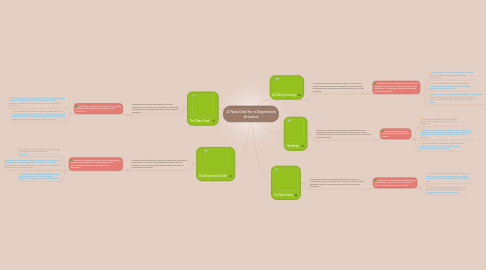
1. An Ailing Economy
1.1. Students will analyze the principle causes of 1929 Stock Market Crash and the Great Depression by identifying the critical problems threatening the American economy in the late 1920s.
1.1.1. Assessment- Students will complete the guided practice for the lecture, engage in essential class discussions, and respond to a variety of student responses/activities.
1.1.1.1. Teacher gives lecture presentation on the 1920s economy and the causes of the 1929 Stock Market Crash.
1.1.1.2. Students respond to the following question prompt: “What would happen if you spent more money than you actually had?”
1.1.1.3. Students discuss critical thinking questions and engage in activities (such as requiring the students to construct a political cartoon/advertisement on the innovation of credit).
2. Hardships
2.1. Students will analyze and empathize the hardships many Americans endured during the Great Depression as well as identify the different steps the government took to combat the Great Depression.
2.1.1. Assessment- Students will complete the four-door student activity.
2.1.1.1. Students read firsthand accounts of the horrors and hardships caused by the Great Depression.
2.1.1.2. Students read a textbook section about the horrors and suffering during the Great Depression, in which they will be organizing information into four sections (four-door activity).
2.1.1.3. Students exhibit an empathetic response to the reading in which they will share their thoughts and opinions with the entire class.
3. The New Deals
3.1. Students will analyze and evaluate the effects of and the controversies arising from New Deal economic policies and the expanded role of the federal government during the Great Depression.
3.1.1. Assessment- Students complete the guided worksheet as they circulate form station to station during the gallery walk activity.
3.1.1.1. The teacher engages the students by asking for them to explain the significance of the following FDR quote: "the only thing we have to fear is fear itself."
3.1.1.2. Students will investigate the purpose and significance of various New Deal programs by participating in a gallery walk activity.
4. The "Brain Trust"
4.1. Students will be able to demonstrate, through a simulation, how certain New Deal programs dealt with various issues and hardships brought on by the Great Depression.
4.1.1. Assessment- Students will submit a final proposal assignment and present their proposal to the entire class.
4.1.1.1. The teacher will provide the students with following questions to answer and respond to in their journal: "what is the purpose of a brain trust?" and "how do you solve problems in your life?"
4.1.1.2. Students will be divided into groups in which they are to collaborate together (simulation activity) to write up a formal proposal of solutions (New Deal programs) designed to solve specific problems caused by the Great Depression.
5. The Depression Ends?
5.1. Students will participate in a variety of collaborative discussions, by evaluating key themes of the Great Depression unit and engaging in a discussion about the explanations for how the Great Depression ended.
5.1.1. Assessment- Students will have many opportunities for individual and collaborative understanding of the content through small group and whole class discussions.
5.1.1.1. Students will be divided into pairs to discuss the principle causes of the Great Depression.
5.1.1.2. Students will be divided up into groups of four to discuss and deliberate the impact of the Great Depression on American society and the different strategies implemented to reverse the fortunes of the Great Depression.
5.1.1.3. Students will be engaged in large group and whole class discussions on what factors contributed to the end of the Great Depression.
